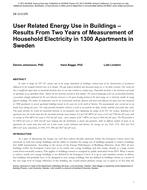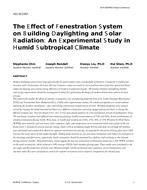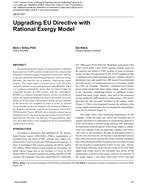Controlling static pressure in a building space is often required to minimize negative wintertime drafts or building overpressurization during economizer outdoor cooling periods. The operation of these systems can be considerably complicated by connecting separate adjacent buildings through an open corridor, which can become an uncomfortable “wind-tunnel” if the pressure interaction between the two buildings is not addressed. A western U.S. university laboratory building was re-controlled and a connected classroom building had its constant volume system retrofitted to VAV operation during the fall of 1986 and early winter of 1987. This changed the previously balanced pressure interaction between the two building that was obtained by balanced pressure interaction merely mechanically balancing that the laboratory building classroom building to prevent laboratory experiments. re-controlled and a connected classroom system retrofitted to VAV operation during This changed the previously between the two buildings that was obtained by merely mechanically balancing the respective fan volumes. It was critical pressure that the laboratory building pressure be held negative with respect to the classroom building to prevent the spread of odors or contaminated gases.
This paper discusses the pressure control of the building’s mechanical systems and the two different space pressure control techniques “conventional outdoor air” and “interbuilding differential pressure control.” Some observations, results, and and comparisons for both techniques are reported.
Units: Dual
Citation: Symposium, ASHRAE Transactions, 1987, vol. 93, pt. 2, Nashville, TN
Product Details
- Published:
- 1987
- Number of Pages:
- 11
- File Size:
- 1 file , 840 KB
- Product Code(s):
- D-NT-87-04-3


